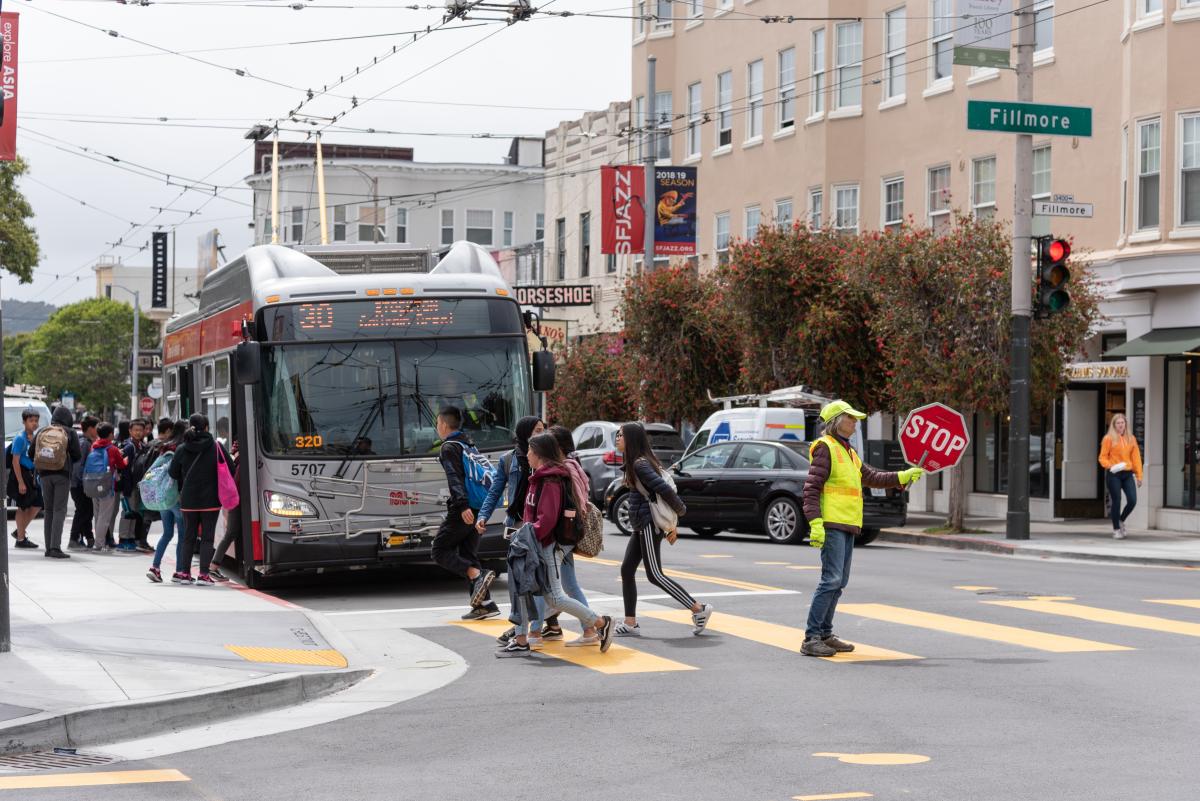By Shalon Rogers

Photo caption: Every SFUSD elementary, middle and high school is served by at least one Muni route and are within a five-minute walk of a Muni stop
As the first day of school for San Francisco students approaches, the SFMTA wants to ensure that families have reliable, efficient transportation to get them to and from school.
To help determine which bus your child can take to school, the SFMTA has put together a list of Muni routes that serve SFUSD schools. This resource shows the closest transit options for all San Francisco public elementary, middle and high schools. You can also plan your student’s door-to-door trip on Muni, biking or walking with the SFMTA’s trip planner.
Service changes implemented in July, including the restoration of the 2 Sutter, 6 Parnassus and 21 Hayes, as well as the extension of the 23 Monterey down Sloat Boulevard and the 43 Masonic to the Marina, have ensured that at least one or more Muni routes provides transportation to all SFUSD schools.
Additionally, Muni school trippers will provide service throughout the school year. School trippers are extra buses on existing routes that meet students after school at some of the city’s largest middle and high schools. They begin their route near a school site to help prevent crowding and pass ups on busy Muni routes after school, and then continue along their regular route. Schools served by a school tripper can be found on the Muni Routes to City Schools page.
Crossing guards will also have a large presence near school sites to assist families with arriving and departing school safely. As part of the SFMTA’s Crossing Guard Program, 175 crossing guards will cover 106 public and private schools at 154 intersections throughout the city.
All youth 18 and younger can take advantage of the SFMTA’s Free Muni for Youth program, which no longer requires proof of income to participate. A Clipper Card is not required for buses and trains, however it is needed to receive a free fare on cable cars. For those who ride cable cars regularly, a cable car pass is available for youth 5 to 18 years old; youth four and under always ride for free.
Following the latest guidance from the California Department of Public Health (CDPH), the San Francisco Department of Public Health (SFDPH) and the Federal Transit Administration (FTA), masks are recommended but no longer required in SFMTA facilities or vehicles. However, to help protect those who remain at higher risk to COVID-19, including older adults and some people with disabilities, we recommend that masks continue to be worn on transit.
With just a few weeks left before school begins, let Muni help you enjoy the remaining days of summer. Ride the 18 46th Avenue to the Legion of Honor or San Francisco Zoo or take the 28 19th Avenue to the Golden Gate Bridge. Head to Ghirardelli Square on the Powell/Hyde Cable Car or, for a faster trip, ride the 49 Van Ness and enjoy San Francisco’s first bus rapid transit corridor. However you spend the remaining days of summer, know that Muni will help get you and your family there.
Published August 02, 2022 at 04:17PM
https://ift.tt/EVuDJA9
Comments
Post a Comment